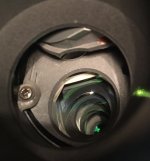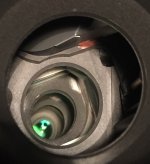Hello Steve,
Balcote was the proprietary name for B&L MgFl coating, which they started using, during WWII on military binoculars, and then on the civilian models, after WWII.
Arthur :hi:
I'd be very surprised if B&Ls were mulitcoated. I don't think most companies didn't start using MCs until the late 1970s/early 1980s, FMC in the late 1980s/early 1990s.
Brock
Brock, I'm not surprised that you aren't surprised either.
Arthur,
I realize Balcote was B&L's proprietary MgFl coating process. I should have figured you did too, but didn't.

On to the Single vs Multi coating. As far as I can see, the first day that multiple coatings of MgFl were tried was the day after Karl Abbe applied the first single layer of MgFl. We tend to forget that we know the binocular as we know it today, we owe to Dr. Abbe. It was he who applied for the first patent of what we know as the porro prism. At the point of Abbe's patent application, nobody knew about Ignacio Porro. It was happenstance that somebody in the German Patent office, doing their due diligence happened to stumble upon Porro's work.
The technical superiority of Zeiss went to Japan, where the Japanese learned their optical lessons. Baush & Lomb was also associated , like Japan, in the years before WW I, with Zeiss. So Zeiss taught much of the world about Optics.
Arthur, you are right about coatings being applied during WWII. I think that everybody, starting with Zeiss, started working with more than one coating of MgFl during that time as well. It is illogical to assume they did that they did not.
Further, B&L was the major optical manufacturer that came unscathed from the damage of WWII. They had state of the art technology for vacuum coating application. Their links to military research may have gone further than state of the art at some points.
I'll have to do a little more digging, but during my research on the Bushnell Rangemaster, I came across statements that Fuji was using multiple MgFl coatings in the early 50's. I read that about the Zephyr as well. I had it in my mind that the hard coatings were more than one layer of MgFl (an here I freely admit I might well be incorrect) Most of that is likely found on europa.com.
Just because companies did not start advertising the fact until the 70's and beyond, does not mean they weren't using them. It took the marketers awhile to realize the advantages of promoting it. I also do not intend to be making a definitive statement that my 1951 Balcote Zephyr is indeed a multi coated MgFl instrument.






